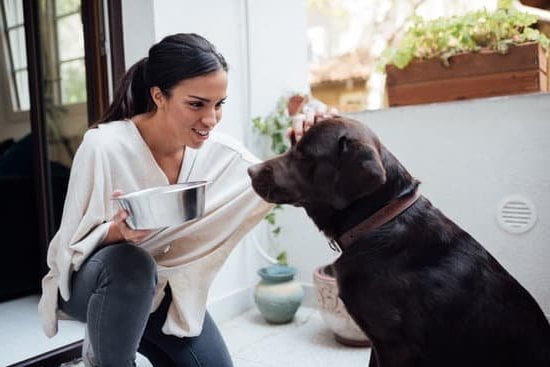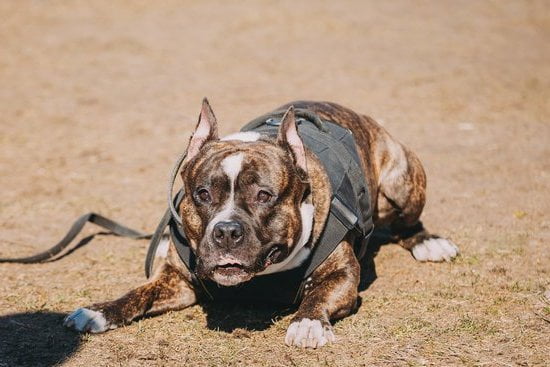Training your dog to come when called is an essential skill that can ensure their safety and your peace of mind. Whether you’re at the park, in your backyard, or simply out for a walk, having a reliable recall command can prevent potential dangers and make daily interactions with your furry friend more enjoyable.
In this article, we will explore the importance of teaching your dog to come when called, understand their behavior and instincts, basic and advanced training exercises for recall, common mistakes to avoid, using positive reinforcement for success, troubleshooting when your dog doesn’t come when called, incorporating recall training into everyday activities, and the long-term benefits of a well-trained recall command.
Understanding your dog’s behavior and instincts is crucial in establishing effective recall training. By tapping into their natural instincts and motivations, you can tailor your approach to better communicate with them. Basic training exercises are the foundation for teaching recall while advanced techniques can further solidify their response.
Additionally, incorporating positive reinforcement is key to ensuring success in their training. Lastly, we will also delve into real-life success stories that demonstrate how training your dog to come when called can truly change your life as a pet owner. Join us on this journey to create a stronger bond with your beloved canine companion through effective recall training techniques.
Understanding Your Dog’s Behavior and Instincts
Dogs are known to be incredibly loyal and loving pets, but they also have a set of instincts and behaviors that have been ingrained in them through years of evolution. Understanding these instincts and behaviors is crucial when it comes to training your dog to come when called.
One of the key instincts that dogs possess is their desire to roam and explore their surroundings. This instinct often leads them to wander off and ignore their owner’s commands, making recall training essential for their safety.
Another important behavior to consider is a dog’s pack mentality. Dogs are social animals and are naturally inclined to follow the leader of their pack. As a pet owner, you can become the leader in your dog’s eyes by establishing trust, consistency, and positive reinforcement during training sessions. By understanding and working with your dog’s natural instincts and behaviors, you can effectively train them to come when called.
It’s also important to acknowledge that some breeds may have stronger instincts or behaviors than others. For example, hunting or herding breeds may have a higher tendency to wander off in pursuit of prey or while patrolling their territory. Recognizing these breed-specific traits will help you tailor your training approach to better suit your dog’s individual needs.
| Dog Behavior | Importance for Recall Training |
|---|---|
| Roaming and exploration instinct | Training for safety |
| Pack mentality | Establishing trust and leadership |
| Breed-specific traits |
Basic Training Exercises for Teaching Recall
When training your dog to come when called, it is important to start with basic exercises that build a strong foundation for the recall command. Here are some basic training exercises to help teach your dog to come when called:
1. Name Recognition: Begin by teaching your dog to recognize their name. Use treats and praise to reinforce their response when you say their name.
2. On-Leash Recall: Start with on-leash recall exercises in a quiet, enclosed area. Call your dog’s name and use a verbal cue such as “come” while gently pulling the leash towards you. When they reach you, reward them with treats and praise.
3. Off-Leash Recall: Once your dog has mastered on-leash recall, gradually transition to off-leash exercises in a secure area. Use high-value treats or toys to motivate your dog to come when called.
It is important to be patient and consistent with these training exercises. Remember to keep training sessions short and positive, and always end on a high note with plenty of rewards for your dog’s good behavior.
By practicing these basic training exercises consistently, you will lay the groundwork for a reliable recall command that can ultimately keep your dog safe in any situation.
Advanced Training Techniques for Recall
Once your dog has a good grasp of the basic recall command, you can start incorporating advanced training techniques to further solidify their response. One effective technique is to practice recall in various environments with different levels of distractions. This can help your dog generalize the behavior and understand that the recall command applies in any situation, not just at home or in a controlled environment.
Another useful technique is to incorporate “hide and seek” games into your recall training. This not only reinforces the recall command but also adds an element of fun for your dog. Start by having someone hold your dog while you hide, then call out the recall command. When they find you, reward them with praise and treats. This game can strengthen the bond between you and your dog while reinforcing their response to the recall command.
Additionally, consider using long lines or leashes during advanced recall training. These tools allow you to give your dog more freedom while still maintaining control over their actions. As they become more reliable with their response, gradually increase the distance between you and your dog when practicing recall. This will help build their confidence and reinforce their understanding of the command even at greater distances.
| Technique | Description |
|---|---|
| Varying Environments | Practice recall in different settings to help generalize the behavior. |
| Hide and Seek Games | Incorporate fun games into training to reinforce the recall command. |
| Long Lines/Leashes | Use these tools to gradually increase distance during advanced recall training. |
Common Mistakes to Avoid When Training Your Dog to Come When Called
When training your dog to come when called, there are several common mistakes that you should avoid in order to ensure successful and effective training. By being aware of these mistakes, you can improve the chances of your dog mastering the recall command.
Some common mistakes to avoid when training your dog to come when called include:
- Being inconsistent with the command: Using multiple words or phrases for the recall command can confuse your dog. Stick to one consistent word or phrase for the recall command.
- Using the recall command for negative experiences: If you only call your dog to come when it’s time to leave the park or end playtime, they may associate the recall command with negative experiences. This can make them less likely to come when called in the future.
- Reprimanding your dog when they finally come: If your dog takes a while to respond to the recall command and finally comes, avoid reprimanding them. This can create a negative association with coming when called, making them less likely to obey in the future.
By avoiding these common mistakes, you can improve the effectiveness of your dog’s recall training and ensure a positive and successful learning experience for both you and your furry friend.
Using Positive Reinforcement to Ensure Success
Understanding the Power of Positive Reinforcement
Using positive reinforcement in dog training involves rewarding your dog for exhibiting the desired behavior. This can include treats, praise, or playtime. When it comes to teaching your dog to come when called, positive reinforcement can be highly effective in establishing a strong recall command. By associating coming when called with positive rewards, your dog will be more likely to respond quickly and consistently.
Choosing the Right Rewards
One essential aspect of using positive reinforcement is choosing the right rewards for your dog. It’s important to find out what motivates your dog the most – whether it’s their favorite treat, a special toy, or simply receiving enthusiastic praise from you. Experiment with different rewards during training sessions to determine what resonates best with your furry friend.
Consistency and Patience
Using positive reinforcement requires patience and consistency on your part as a pet owner. It’s crucial to reward your dog each time they come when called, especially during the initial stages of training. Additionally, avoid using punishment or negative reinforcement when your dog doesn’t respond as expected. Always remain patient and positive to create a safe and encouraging environment for your pet during recall training.
Troubleshooting
Understanding Your Dog’s Behavior and Instincts
When your dog doesn’t come when called, it can be frustrating and even concerning. However, it’s important to understand that there are several reasons why a dog may not respond to the recall command. Dogs have natural instincts and behaviors that may override their training in certain situations.
For example, if a dog is highly distracted by something in their environment, they may not prioritize responding to the recall command. Additionally, fear, anxiety, or stress can also play a role in a dog’s reluctance to come when called.
Common Mistakes to Avoid
There are several common mistakes that dog owners make which can impact their dog’s response to the recall command. One of the most common errors is using the recall command for negative things such as punishment or ending playtime. This can create negative associations with the command, causing the dog to be less likely to respond in the future. Additionally, inconsistent training or using the recall command too frequently without reinforcement can also lead to a lack of responsiveness.
Using Positive Reinforcement
One effective way to troubleshoot and improve your dog’s response to the recall command is by using positive reinforcement techniques. By rewarding your dog with treats, praise, or play whenever they do come when called, you can reinforce this behavior and increase the likelihood of them responding in the future.
It’s important to make coming when called a positive and rewarding experience for your dog every time. By doing so, you can gradually increase their reliability and responsiveness to the recall command.
Incorporating Recall Training Into Everyday Activities
Incorporating recall training into your dog’s daily routines and activities is essential for ensuring that the command becomes ingrained in their behavior. One effective way to do this is by integrating recall exercises into their playtime. For example, during a game of fetch, use the “come” command before throwing the toy and again when they retrieve it. This not only reinforces the recall training but also adds an element of fun to the learning process.
Another everyday activity where you can incorporate recall training is during walks or visits to the park. Before allowing your dog off-leash, practice the recall command in a controlled environment. Start with short distances and gradually increase the distance as your dog becomes more proficient at coming when called. It’s important to always reward them with treats or praise when they respond correctly to the recall command, making it a positive experience for them.
Additionally, mealtime can be utilized as another opportunity for practicing recall training. Before putting down their food bowl, ask your dog to come and sit, reinforcing their obedience and responsiveness. By integrating recall exercises into everyday activities, you are reinforcing the importance of the command in various contexts, ultimately leading to better compliance from your dog in any situation.
The Long-Term Benefits of a Well-Trained Recall Command
A well-trained recall command can have numerous long-term benefits for both you and your dog. Once your dog has mastered the art of coming when called, you will have peace of mind knowing that you can trust your furry friend to return to you, even in challenging or distracting environments. This means that you can give your dog more freedom to explore their surroundings without worrying about them running off and getting into trouble.
Additionally, a well-trained recall command can strengthen the bond between you and your dog. When your dog responds promptly and consistently to your call, it fosters a sense of trust and communication between the two of you. This can lead to a deeper understanding of each other’s needs and enhance your overall relationship.
Moreover, having a reliable recall command can also ensure the safety of your dog in potentially dangerous situations. Whether it’s recalling them away from a busy road or calling them back when encountering wildlife on a hike, knowing that your dog will come when called could save their life. It also allows for more enjoyable outings with your pet, as you can both relax and have fun without constantly worrying about their whereabouts.
Real-Life Success Stories
In conclusion, teaching your dog to come when called is an essential skill that can positively impact both you and your furry friend. By understanding your dog’s behavior and instincts, and using basic and advanced training techniques, you can ensure that they respond to your recall command reliably. Avoiding common mistakes and incorporating positive reinforcement will also contribute to the success of their training.
Real-life success stories demonstrate the transformative power of recall training. From off-leash hikes in the mountains to peaceful outings in busy city parks, these stories show how a well-trained recall command can provide freedom and peace of mind for both dogs and their owners. Whether it’s preventing a potential danger or simply enjoying stress-free walks, the benefits of a reliable recall command are endless.
Incorporating recall training into everyday activities not only reinforces the behavior but also makes it a natural part of your dog’s routine. By long-term commitment to this training, you’ll set your dog up for a lifetime of safety, happiness, and freedom. Ultimately, the bond between you and your dog will strengthen as you both enjoy the benefits of a well-trained recall command.
Frequently Asked Questions
How Do You Train a Stubborn Dog to Come When Called?
Training a stubborn dog to come when called requires patience, consistency, and positive reinforcement. Start by using high-value treats to motivate your dog and practice in a quiet, distraction-free environment.
Gradually increase the level of distractions as your dog improves. Avoid scolding or punishing your dog for not coming when called, as this can make them fear responding to your command.
What to Do When a Dog Ignores a Command?
When a dog ignores a command, it’s important to stay calm and avoid repeating the command multiple times, as this can teach the dog that they don’t need to respond right away. Instead, try using different cues or signals to get their attention or gently guide them into performing the desired behavior.
It’s also helpful to reinforce obedience training regularly to ensure that the dog understands and remembers the commands.
Why Doesn’t My Dog Come When I Call Him?
There are several reasons why a dog may not come when called, including lack of training, fear or anxiety, being too distracted by their surroundings, or simply not understanding the importance of responding to the command. It’s important to evaluate your training methods and environment to determine what might be causing the lack of response.
Additionally, certain health issues could affect a dog’s ability to hear or respond, so it’s essential to consult a veterinarian if you suspect any underlying medical problems.

Welcome to the blog! I am a professional dog trainer and have been working with dogs for many years. In this blog, I will be discussing various topics related to dog training, including tips, tricks, and advice. I hope you find this information helpful and informative. Thanks for reading!





